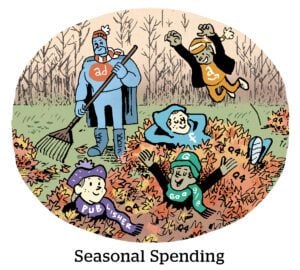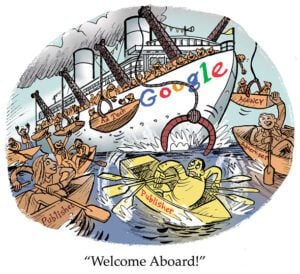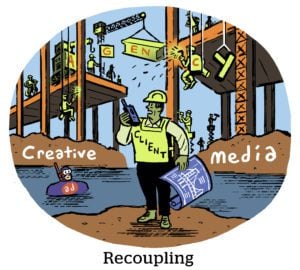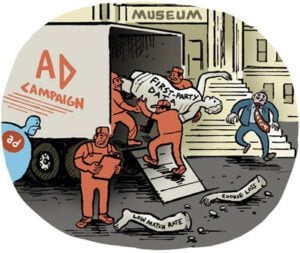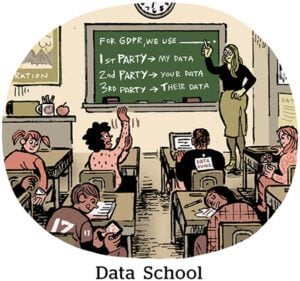I never thought I would get paid to watch Snoop Dogg’s latest movie but, well, here we are. Prime Video is playing with ads now, making it the latest entrant to the AVOD streaming wars.
There is skepticism out of the gate. Consumers are protesting the default to ads, with some threatening to cancel their subscriptions rather than pay an additional $3 per month to avoid ads. Media buyers also had a lukewarm response to Prime Video’s pitch deck, according to Insider Intelligence, despite the promise of wide scale and low CPMs compared to the competition.
But if Prime Video can get its subscribers to stick around and watch ad-supported content, advertisers will gain yet another place to shift their budget from linear TV.
So, when ads launched on Monday, I leaned back and checked out its ad experience for myself. I watched eight episodes of “Judy Justice,” four episodes of “Everybody Hates Chris,” four episodes of “Chicago P.D.” and “The Underdoggs,” a new movie co-directed by Snoop Dogg that came out last week (and which I don’t recommend).
What stuck out to me most about Prime Video’s ad experience was a notably low ad load, although frequency management may need some improvement.
Starting small
Prime Video’s assurance to consumers is that, although ads are turned on by default, there won’t be too many of them. Subscribers got an interstitial notifying them that “movies and TV shows included with Prime now have limited ads” when they logged in this week.
Which was true for my experience: Of the 16 TV episodes I watched, the average ad volume was just a hair over one and a half minutes of ads per hour of content – below the expected ad load listed in the pitch deck, which was between two and three and a half minutes.
A low ad volume could help Prime Video reduce subscriber churn because, well, too many ads annoy viewers. And while other major streaming services used to brag about having minimal ads, nearly all of them have gradually increased their ad volume over the course of last year.
Ads on Prime Video were a mix of 15- and 30-second pre-roll and mid-roll ads. Commercial breaks happened at natural points within the show, and each break included only one ad, so the experience didn’t feel too disruptive.
Unsurprisingly, Prime Video commercials called out products available to purchase on Amazon’s site, such as Samsung Galaxy phones, using ad creatives that appeared to be customized for the platform. Other nonendemic advertisers running spots on Prime include large national brands such as DraftKings, Expedia, Colgate, Chewy, Priceline, Virgin Atlantic, Zipcar and skin care brand LaRoche-Posay.
On the house
But based on my experience, the most common type of ad was house ads, as in Amazon promoting its own titles on Prime Video and Freevee, Amazon’s free streaming service formerly known as IMDb. (Amazon recently added more Freevee titles onto Prime Video and reshuffled leadership to prioritize Prime Video.)
Roughly 43% of the ads I saw on the platform (as in, 12 of the 28 ads served to me) were for Prime Video or Freevee titles available to stream on Prime Video.
That’s a high enough number to make me briefly wonder how much advertiser demand Prime Video secured. But considering its broad scale and low prices – ads could reach 115 million users and carry CPMs between $26 and $41 – it’s also likely Amazon is just choosing to promote its own titles to encourage more viewership on Prime Video.
After all, more engaged viewers should attract more advertisers.
Back to back
Although the ad volume was minimal, I noticed some repetition.
Two consecutive episodes of “Judy Justice” served me a total of four ads, and all four were for Colgate toothpaste. I also noticed two Chewy ads in the same episode of “Everybody Hates Chris.”
To be fair, there were two alternating creatives for each brand, which made it feel slightly less jarring. Two ads with a different creative could have fallen within a brand’s frequency cap. But multiple spots for the same advertiser within one episode is suboptimal; it makes me (and likely other viewers) feel bombarded.
“We have processes in place to manage ad frequency for customers,” an Amazon spokesperson told me when I asked about frequency controls.
My viewing experience also happened during launch week. Prime Video will likely diversify its roster of advertiser clients post-launch. And it will be interesting to see if the introduction of ads affects its subscribers (and if complainers continue to subscribe).
What I’m wondering is: How will Prime Video compete for TV ad budgets against more established AVOD platforms during the upfronts this year? 🥊
Let me know what you think. Hit me up at [email protected].




